 W
WClan Donald, also known as Clan MacDonald, is a Highland Scottish clan and one of the largest Scottish clans. The Lord Lyon King of Arms, who is the Scottish official with responsibility for regulating heraldry in that country, issuing new grants of coats of arms, and serving as the judge of the Court of the Lord Lyon, recognizes under Scottish law the High Chief of Clan Donald. Historically the chiefs of the Clan Donald held the title of Lord of the Isles until 1493 and two of those chiefs also held the title of Earl of Ross until 1476.
 W
WAlasdair Óg Mac Domhnaill was Lord of Islay and chief of Clann Domhnaill. He was the eldest son of Aonghus Mór mac Domhnaill, Lord of Islay. Alasdair Óg seems to first appear on record in 1264, when he was held as a hostage of the Scottish Crown for his father's good behaviour. During Alasdair Óg's career, the Scottish realm endured a succession crisis as a result of the unexpected death of Margaret, Maid of Norway, heir to the Scottish throne, in 1290. One of several factions that staked a claim to the throne was the Bruce kindred. Both Alasdair Óg and his father were cosignatories of the Turnberry Band, a pact that may have partly concerned the Bruces' royal aspirations.
 W
WAlastair MacDonell of Glengarry, also known as Alasdair Ruadh MacDomhnaill, was the 13th chief of Clan MacDonell of Glengarry. Brought up as a Catholic and largely educated in France, he was arrested in November 1745 on his way to join the 1745 Jacobite Rising.
 W
WAlexander of Islay or Alexander MacDonald was a medieval Scottish nobleman, who succeeded his father Domhnall of Islay as Lord of the Isles (1423–1449) and rose to the rank of Earl of Ross (1437–49). His lively career, especially before he attained the earldom of Ross, led Hugh MacDonald, the 17th century author of History of the MacDonalds, to commemorate him as "a man born to much trouble all his lifetime". Alexander allied himself with King James I of Scotland against the power of the Albany Stewarts in 1425 but, once the Albany Stewarts were out of the way, Alexander quickly found himself at odds with the new king. War with King James would initially prove Alexander's undoing, and would see the King's power in Scotland greatly increased, but at the Battle of Inverlochy Alexander's army prevailed against the forces of the King. Alexander died in 1449, having greatly extended his family's landed wealth and power. He was buried, not in the Isles of his ancestors, but at Fortrose Cathedral in his mainland Earldom of Ross.
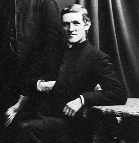 W
WFather Allan MacDonald was a Roman Catholic priest, poet, folklore collector, and activist from the Scottish Gàidhealtachd.
 W
WAonghus Mór mac Domhnaill was a leading figure in the thirteenth-century kingdoms of the Isles and Scotland. He was a son of Domhnall mac Raghnaill, the eponym of Clann Domhnaill, a branch of Clann Somhairle. Aonghus Mór appears to have succeeded his father in the mid part of the thirteenth century. At the time, the rulers of the Isles were fiercely independent of the Scottish Crown, and owed nominal allegiance to the distant Norwegian Crown. Aonghus Mór's first certain appearance in the historical record seems to evince his involvement in aiding native Irish kindreds against the consolidation of Anglo-Irish authority in the north-west Ireland. Such cooperation could have been undertaken in the context of overseas kindreds like Clann Domhnaill constructing Irish alliances to gain assistance against Scottish encroachment.
 W
WAonghus Óg Mac Domhnaill, or Angus Og MacDonald, was a fourteenth-century Scottish magnate and chief of Clann Domhnaill. He was a younger son of Aonghus Mór mac Domhnaill, Lord of Islay. After the latter's apparent death, the chiefship of the kindred was assumed by Aonghus Óg's elder brother, Alasdair Óg Mac Domhnaill.
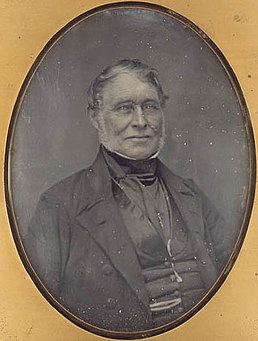 W
WArchibald McDonald was Chief Trader for the Hudson's Bay Company at Fort Langley, Fort Nisqually and Fort Colvile and one-time deputy governor of the Red River Colony.
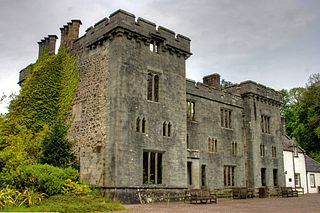 W
WArmadale Castle is a ruined country house in Armadale, Skye, former home of the MacDonalds. A mansion house was first built here around 1790. In 1815 a Scottish baronial style mock-castle, intended for show rather than defense, designed by James Gillespie Graham, was built next to the house.
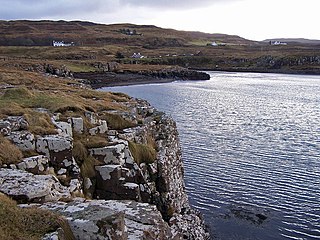 W
WThe Battle of Glendale was a battle fought on the Inner Hebridean Isle of Skye, between the MacDonalds of Sleat and the MacDonalds of Clanranald, against the MacLeods of Harris and Dunvegan and the MacLeods of Lewis. According to MacLeod tradition preserved in the early 19th century, the battle was fought in about the year 1490; yet it has been recently suggested that the battle more likely took place sometime after 1513. MacLeod tradition records that the battle was the 'most tremendous battle' that the clan ever fought—although the clan was victorious, it never fully recovered from its severe losses. MacLeod tradition relates how the MacDonalds originally had the upper hand during the conflict, but when the MacLeod's sacred Fairy Flag was unfurled the MacLeods gained heart and won the battle.
 W
WThe Battle of Mulroy was a Scottish clan battle fought in August 1688 in the Lochaber district of Scotland. It was fought between the Clan Mackintosh who were supported by government troops under Kenneth Mackenzie of Suddie against the Clan MacDonald of Keppoch who were supported by the Clan Cameron over disputed lands in the Braes of Lochaber. The battlefield has been inventoried and protected by Historic Scotland under the Scottish Historical Environment Policy of 2009.
 W
WThe Battle of the Spoiling Dyke (also known as the Battle of the Spoiled Dyke, was a Scottish clan battle that took place in 1578, fought in the Scottish Highlands, between the MacDonalds of Uist and the Clan MacLeod.
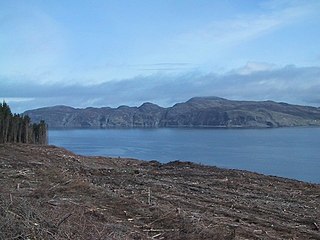 W
WThe Battle of Bloody Bay, or Blàr Bàgh na Fala in Scottish Gaelic, was a naval battle fought near Tobermory, Scotland. It was fought on the coast of Mull 2 miles north of Tobermory, between John MacDonald of Islay, the Lord of the Isles and chief of Clan Donald; and his son, Angus Og Macdonald. The precise date of the battle varies in sources, from 1480 to 1483. After the battle, in which Angus Og Macdonald emerged victorious, the latter seized power from his father, and held it for the rest of the decade. However, Angus's victory would prove pyrrhic. Many clansmen had died in the battle and nearly half the clan's fleet had been sunk, as a result of which the power of the Lords of the Isles was henceforth greatly diminished. Angus, last of the independent Lords of the Isles, would himself be murdered in 1490.
 W
WThe Books of Clanranald are two paper manuscripts that date to about the early 18th century. The books are written in Classical Gaelic, and are best known for their traditional account of the history of Clan Donald. The manuscripts are commonly referred to as the Red Book and the Black Book. The name "Red Book", however, may actually be a misnomer. Although Gaelic tradition on South Uist notes a "Red Book of MacMhuirich", it is uncertain whether this book is identical to the surviving manuscript. In fact, the manuscript may be partly derived from the red book of tradition. The name "Black Book" may have been coined in order to distinguish it from the so-called Red Book.
 W
WThe Battle of Carinish was a Scottish clan battle fought in North Uist in 1601. It was part of a year of feuding between Clan MacLeod of Dunvegan and the Clan MacDonald of Sleat, that ended with a MacDonald victory and an enforced peace.
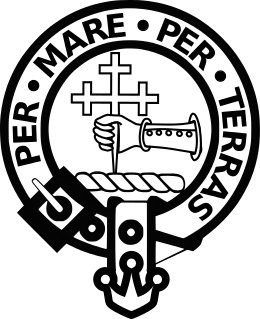 W
WClan Macdonald of Sleat, sometimes known as Clan Donald North and in Gaelic Clann Ùisdein [kʰl̪ˠan̪ˠ ˈuːʃtʲɛɲ], is a Scottish clan and a branch of Clan Donald — one of the largest Scottish clans. The founder of the Macdonalds of Sleat was Ùisdean, or Hugh, a 6th great-grandson of Somerled, a 12th-century Lord of the Isles. The clan is known in Gaelic as Clann Ùisdein, and its chief's Gaelic designation is Mac Ùisdein, in reference to the clan's founder. Both the clan and its clan chief are recognised by the Lord Lyon King of Arms, who is the heraldic authority in Scotland.
 W
WClan MacDonald of Clanranald, also known as Clan Ranald or Clan Ronald, is a Highland Scottish clan and a branch of Clan Donald, one of the largest Scottish clans. The founder of the MacDonalds of Clanranald is Reginald, 4th great-grandson of Somerled. The MacDonalds of Clanranald descend from Reginald's elder son Allan and the MacDonells of Glengarry descend from his younger son Donald. The clan chief of the MacDonalds of Clanranald is traditionally designated as The Captain of Clanranald and today both the chief and clan are recognised by the Lord Lyon King of Arms, the heraldic judge in Scotland.
 W
WThe Battle of Coire na Creiche was a Scottish clan battle fought on the Isle of Skye in 1601. It was the culmination of a year of feuding between Clan MacLeod of Dunvegan and the Clan MacDonald of Sleat, that ended with a MacDonald victory in Coire na Creiche on the northern slopes of the Cuillin hills. It was the last clan battle in Skye.
 W
WDomhnall mac Raghnaill was a Hebridean noble in the late 12th and early 13th centuries. He is the eponymous progenitor of Clan Donald. For this reason some traditions accumulated around him in the later Middle Ages and early modern period. His vast impact on culture and in the centuries remains today. Despite his role as the historical figurehead of one of the world's most famous kindreds and surnames, there is almost no contemporary evidence yielding certain information about his life.
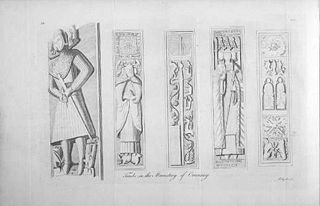 W
WDonald, Lord of the Isles, was the son and successor of John of Islay, Lord of the Isles and chief of Clan Donald. The Lordship of the Isles was based in and around the Scottish west-coast island of Islay, but under Donald's father had come to include many of the other islands off the west coast of Scotland, as well as Morvern, Garmoran, Lochaber, Kintyre and Knapdale on the mainland.
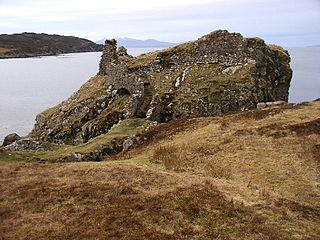 W
WDunscaith Castle also known as Dun Scaich, Dun Sgathaich Castle and Tokavaig, is a ruined castle on the coast of the Isle of Skye, in the north-west of Scotland. It is located in the Parish of Sleat, in the Highland council area, and in the former county of Inverness-shire, at grid reference NG595120. Also called "Fortress of Shadows", it is named after and was the home of the warrior maiden Scáthach. It is protected as a scheduled monument.
 W
WDuntulm Castle stands ruined on the north coast of Trotternish, on the Isle of Skye in Scotland, near the hamlet of Duntulm. During the 17th century it was the seat of the chiefs of Clan MacDonald of Sleat. It is a scheduled monument.
 W
WEilean Munde is a small uninhabited island in Loch Leven, close to Ballachulish. It is the site of a chapel built by St. Fintan Mundus, who travelled here from Iona in the 7th Century. The church was burnt in 1495 and rebuilt in the 16th Century. The last service in the church was held in July, 1653. The island is the site of a graveyard once used by the Stewarts of Ballachulish, the MacDonalds of Glencoe and the Camerons of Callart. The clans shared the island and the maintenance of the graveyard, even when there was conflict between them. The last burial took place in 1972, of Mrs Christina MacDonald Sharpe. a native of Glencoe.
 W
WGlenarm Castle, Glenarm, County Antrim, Northern Ireland, is the ancestral home of the Earl of Antrim.
 W
WJohn of Islay was the Lord of the Isles (1336–1386) and chief of Clan Donald. In 1336, he styled himself Dominus Insularum, "Lord of the Isles"; because this is the first ever recorded instance of the title in use, modern historians count John as the first of the later medieval Lords of the Isles, although this rather broad Latin style corresponds roughly with the older Gaelic title Rí Innse Gall, in use since the Viking Age, and for instance, the even more similar Latin title dominus de Inchegal, applied to Raghnall Mac Somhairle in the mid-12th century. In fact John is actually styled Rí Innsi Gall or King of the Isles shortly after his death in a contemporary entry in the Irish Annals of Ulster.
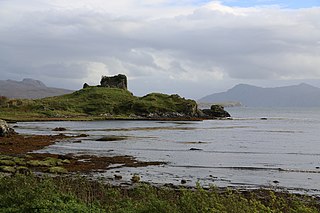 W
WKnock Castle, also known as Caisteal Chamuis is a former stronghold of the MacDonalds. It lies on the east coast of Sleat, approximately five miles (8.0 km) north of Armadale on the Isle of Skye, south of Cnoc Uaine, on the eastern side of Knock Bay. Currently the castle is in ruins; it consists of an old 15th century keep of which one part, a window, remains to some height with traces of later buildings.
 W
WThe Battle of Lagabraad, also known as the Battle of Logiebride, or Lagebread, was a Scottish clan battle that took place in 1480, or 1483, and was fought between the Clan Donald and the Clan Mackenzie of the Scottish Highlands.
 W
WThe Skirmish of Loch Ailort was a conflict that took place on 9 May 1746 at Loch Ailort, in the district of Moidart, Scottish Highlands and was part of the Jacobite rising of 1745.
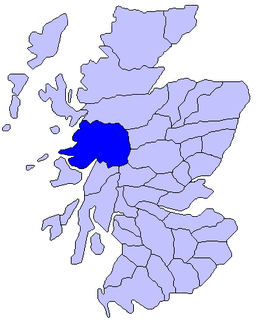 W
WThe Lord of Lochaber was a title in the peerage of Scotland.
 W
WThe Lord of the Isles or King of the Isles (Scottish Gaelic: Triath nan Eilean or Rìgh Innse Gall) is a title of Scottish nobility with historical roots that go back beyond the Kingdom of Scotland. It began with Somerled in the 12th century and thereafter the title was held by a series of his descendants, the Norse Gaels rulers of the Isle of Man and Argyll and the islands of Scotland in the Middle Ages. They wielded sea-power with fleets of galleys (birlinns). Although they were, at times, nominal vassals of the Kings of Norway, Ireland, or Scotland, the island chiefs remained functionally independent for many centuries. Their territory included much of Argyll, the Isles of Arran, Bute, Islay, the Isle of Man, Hebrides, Knoydart, Ardnamurchan, and the Kintyre peninsula. At their height they were the greatest landowners and most powerful lords after the Kings of England and Scotland.
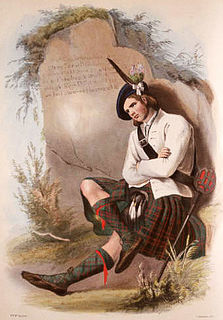 W
WThe MacDonalds of Glencoe, also known as Clann Iain Abrach, was a Highland Scottish clan and a branch of the larger Clan Donald. They were named after Glen Coe.
 W
WClan MacDonnell of Glengarry is a Scottish clan and is a branch of the larger Clan Donald. The clan takes its name from Glen Garry where the river Garry runs eastwards through Loch Garry to join the Great Glen about 16 miles (25 km) north of Fort William, Highland.
 W
WThe MacMhuirich bardic family, known in Scottish Gaelic as Clann MacMhuirich and Clann Mhuirich, was a prominent family of bards and other professionals in 15th to 18th centuries. The family was centred in the Hebrides, and claimed descent from a 13th-century Irish bard who, according to legend, was exiled to Scotland. The family was at first chiefly employed by the Lords of the Isles as poets, lawyers, and physicians. With the fall of the Lordship of the Isles in the 15th century, the family was chiefly employed by the chiefs of the MacDonalds of Clanranald. Members of the family were also recorded as musicians in the early 16th century, and as clergymen possibly as early as the early 15th century.
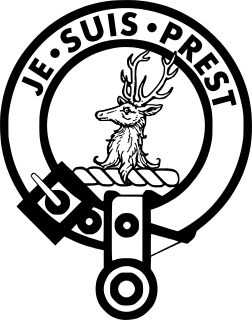 W
WThe Battle of Mamsha was a Scottish clan battle that took place in 1429 and that was fought by the Clan Fraser of Lovat who defeated the invading Clan Donald.
 W
WRanald MacDonald (1756–1832) was a Roman Catholic bishop who served as the Vicar Apostolic of the Highland District from 1819 to 1827, then the Vicar Apostolic of the Western District from 1827 to 1832.
 W
WRanald George Macdonald was a Scottish clan chief and Member of Parliament.
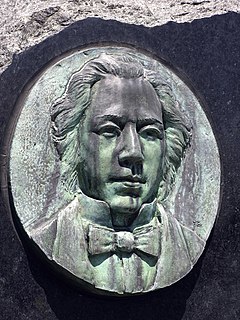 W
WRanald MacDonald was the first native English-speaker to teach the English language in Japan, including educating Einosuke Moriyama, one of the chief interpreters to handle the negotiations between Commodore Perry and the Tokugawa Shogunate.
 W
WClan Donald, also known as Clan MacDonald, is a Highland Scottish clan and one of the largest Scottish clans. The Lord Lyon King of Arms, who is the Scottish official with responsibility for regulating heraldry in that country, issuing new grants of coats of arms, and serving as the judge of the Court of the Lord Lyon, recognizes under Scottish law the High Chief of Clan Donald. Historically the chiefs of the Clan Donald held the title of Lord of the Isles until 1493 and two of those chiefs also held the title of Earl of Ross until 1476.
 W
WThe Battle of the Shirts was a Scottish clan battle that took place in 1544 in the Great Glen, at the northern end of Loch Lochy. The Clan Macdonald of Clanranald and their allies the Clan Cameron fought the Clan Fraser and men from Clan Grant. The battlefield has been included and protected by Historic Scotland in their Inventory of Historic Battlefields in Scotland.
 W
WThe Battle of Skibo and Strathfleet was prompted by Clan Donald's invasion of the area around Dornoch in northern Scotland in 1480. Two attacks were repulsed by the local clans of Clan Sutherland and the Murrays of Aberscross.
 W
WSmerby Castle, also known as Island Muller Castle, is a ruined fortified house on a promontory known as Isla Muller, Kintyre, Argyll and Bute, Scotland, north of Campbeltown. The site is protected as a scheduled monument.
 W
W